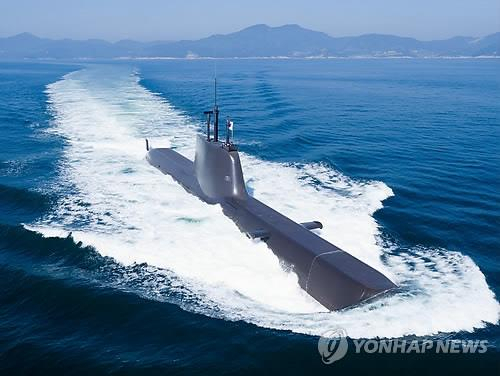In 2019, class 214 submarines also have problems with in-situ components
 viewer
viewer
The Navy’s latest 214 class (1,800 ton class) submarine, which was recently towed during a trial run on the East Sea, was confirmed to have a faulty power converter in the propulsion motor that rotates the propeller.
Two years ago, another 214-class submarine had a problem with the same system components, and the same problem is recurring. Accordingly, the Navy began a full inspection of all 214 class submarines.
According to the military on the 31st, a propulsion system error warning occurred on the east coast of Pohang, Gyeongsangbuk-do on the 23rd, and the class 214 submarine, which was towed by a civilian ship, stopped working and some of the inverter modules (power converters) in the propulsion motor failed.
There are 12 inverter modules in total, and one of them is known to have identified the problem. The inverter module is a key component of the propulsion motor that rotates the submarine propeller.
The Navy said, “The towed submarine was confirmed to have no problem with 11 out of 12 inverter modules, so it was moved to Jinhae base by magnetic voyage for repair and maintenance.”
At the end of October 2019, the propulsion motor of the 214 class 2 ship’Stop’ also failed.
The Navy sent the parts to Siemens, Germany, for repairs that year, but it was found that repairs and maintenance were required by this year. The stop box has been unable to operate properly for more than two years.
The 214-class submarines have been equipped with German technology since 2000, and all nine have been converted to power. It is a newest submarine that is evaluated to have a three to four times wider operating radius than a 209-class (1,200t-class) submarine.
Of the nine 214-class submarines, two of them were found to have problems with parts of the same system, and it is pointed out that the remaining 214-class submarines cannot be relieved.
Accordingly, the Navy is conducting a thorough inspection of the propulsion motors of other 214-class submarines as well.
In order to conduct a full inspection of the submarine, the operation of the target submarine must be stopped, so it cannot be put into operation during that period. It seems for this reason that some have raised suspicion that many of the 214 class submarines are unable to engage in operational missions.
A Navy official explained that “Son Won-il class (214 class) submarines other than the two currently being repaired are in a state of being able to operate the ship.”
The propulsion motor component in question this time is an intellectual property protection item, so it cannot be maintained at will without the cooperation of the original German manufacturer and technical staff. The navy is planning to replace the parts of the propulsion motor with German Siemens.
In contrast, the propulsion motor of the 3,000-ton submarine currently being built was manufactured by a domestic company. The 214-class submarine is 65.3m long and 6.3m wide, and has a maximum underwater speed of 20 knots (37km) and can accommodate 40 crew members.
It is equipped with an air-free device (AIP) that can supply air without being raised on the surface for a long period of time, so it can travel back and forth to Hawaii without refueling. Once departed, it can operate at sea for 84 days, and submarine operations for about two weeks without being injured by the surface.
/ Reporter Kim Hye-rin [email protected]
< 저작권자 ⓒ 서울경제, 무단 전재 및 재배포 금지 >
